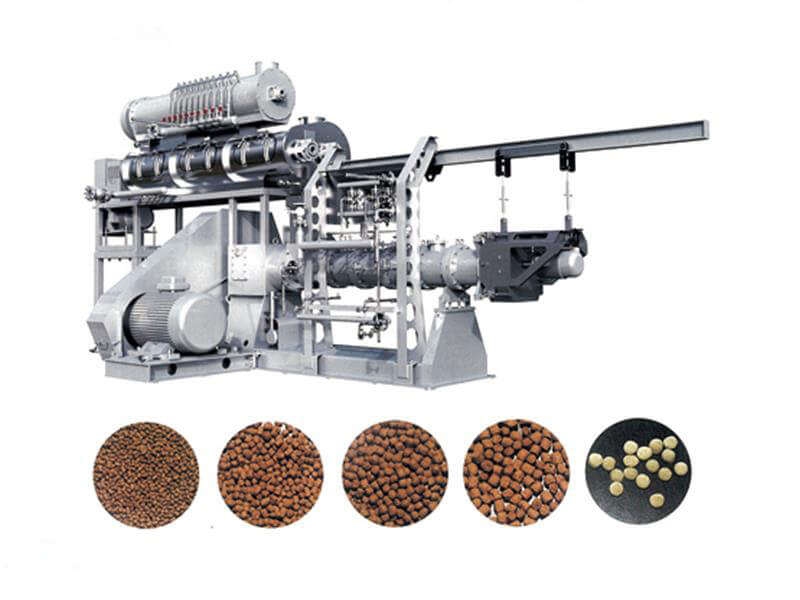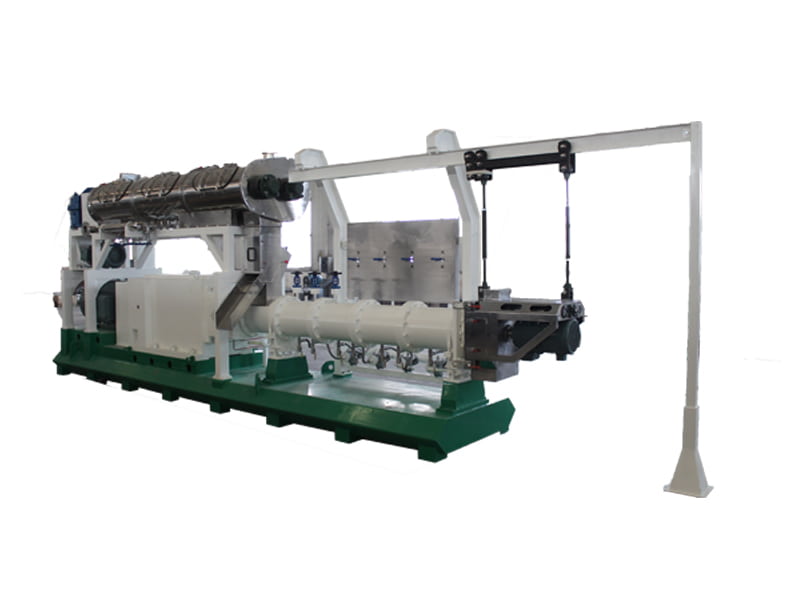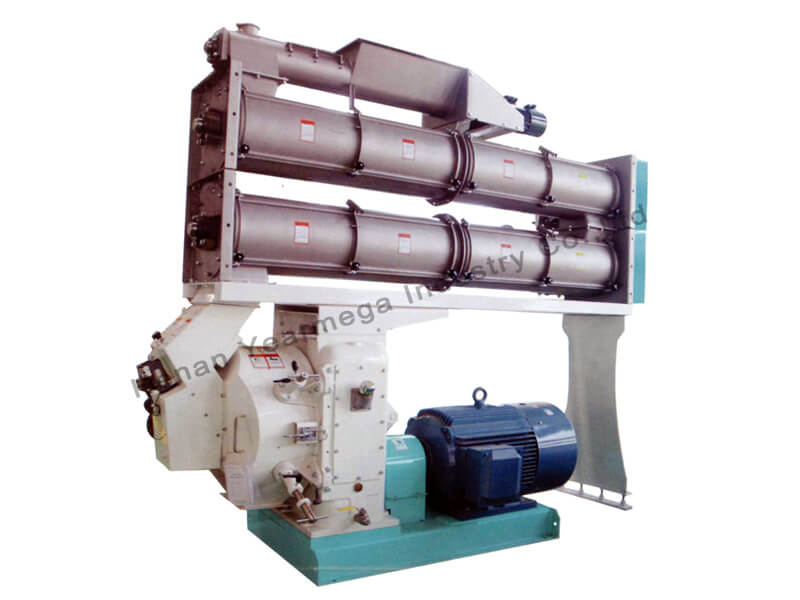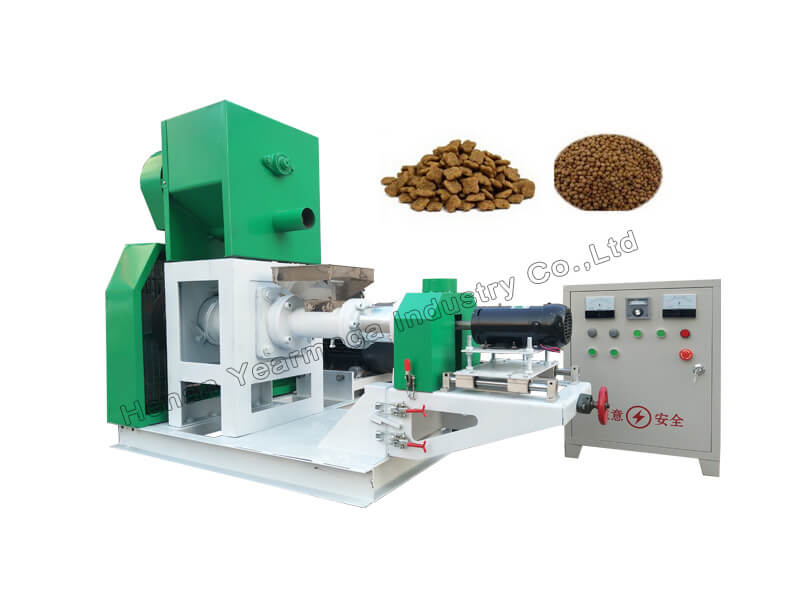- Animal Feed Machine
- Animal Feed Production Line
- Fish Feed and Pet Food Machine
- Fish Feed and Pet Food Production Line
- Soybean Meal Machine
- Feather Meal Machine
- Biomass Wood Pellet Machine
- Biomass Briquette Machine

 Email: carla@hnyearmega.com
Email: carla@hnyearmega.com
 Tel: +86 15093305912
Tel: +86 15093305912
 Skype: zzhrsdcarlar
Skype: zzhrsdcarlar
 WhatsApp & WeChat: +86 15093305912
WhatsApp & WeChat: +86 15093305912
NEWS




Which Factors Do Influence the Fish Feed Coefficient
Feed is the material basis for fish farming and feed costs generally account for 50-60% of the total fish farming cost. At present, the better feed coefficient is about 1.2, while the poor one is more than 2. In fact, the fish’s digestibility for feed is affected by many factors. Here we will mainly talk about four main factors: feed formulation, fish feed production, feeding methods and water environment condition.
1. Scientific Feed Formulation
The nutritional content of the feed itself has a great influence on the feed coefficient. Protein and fat content are the two main nutritional indicators of the feed. The higher the content, the lower the feed coefficient and the better the digestion and absorption of fish is . At the same time, the feed with the same or similar content also will have great difference because of the existing components and the structure of the active ingredients. Take barley, oats and wheat as examples. The protein digestibility of the three kinds of grain feed by carp is “barley> oats > wheat”. This is mainly because the quality of wheat protein is worse than that of barley and oats, that is, the content of lysine and threonine in wheat is low. In addition, high levels of essential nutrients in the feed can also cause indigestion. If the protein content is too high, the amount of protein in the fish remains almost constant, and the increase in body weight is not proportional to the amount of protein in the feed. This not only results in the waste of protein, but also the metabolites of the protein that also pollute the water. Therefore, there should be an optimum amount of various nutrient content in feed. Practice has proved that there should be a proper ratio between protein and non-protein in fish feed, and only if there is sufficient protein, other nutrients can be effectively used. . The lack of a nutrient in the feed can also affect the use of other active ingredients. Complementary feed nutrients in feed can increase feed utilization.
The fish have their own preference on the choice of nutrition. For example, fish can make the most of the protein and fat in the feed, but they cannot absorb carbohydrates and cellulose very well. Besides, the nutritional needs of fish with different feeding habit are also different. Therefore, it is necessary to formulate a reasonable feed formula for fish. Only when the nutrient content in the feed is in line with the demand of the fish can the digestion and absorption rate be increased and the feed coefficient be reduced. This also means that the feed coefficient largely depends on the rationality of the feed formulation.
2. Quality and the processing of raw material
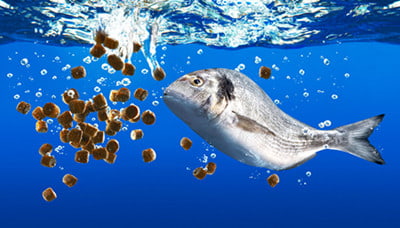 The species, origin, grade, foreign matter content, storage condition and storage period of raw material has a direct impact on the nutritional composition and the quality of the formulated feed. If the quality of the raw material is high, the formulated feed can reach the expected level; otherwise, it will be not. In particular, the storage time of feed ingredients has a great influence on the nutritional value of feed. Although the crude protein content of raw materials will not change during storage, the solubility and digestibility of the protein will gradually decrease with the extent ion of the storage period. When the raw materials are stored at 24°C for 2 years, the protein digestibility will decrease by 8% and other nutrients also have different degrees of reduction. Among them, the loss of VE is the most serious and the fat is easily rancid under the decomposition of lipase during storage. The use of poor quality raw material will greatly reduce the quality of the compound feed.
The species, origin, grade, foreign matter content, storage condition and storage period of raw material has a direct impact on the nutritional composition and the quality of the formulated feed. If the quality of the raw material is high, the formulated feed can reach the expected level; otherwise, it will be not. In particular, the storage time of feed ingredients has a great influence on the nutritional value of feed. Although the crude protein content of raw materials will not change during storage, the solubility and digestibility of the protein will gradually decrease with the extent ion of the storage period. When the raw materials are stored at 24°C for 2 years, the protein digestibility will decrease by 8% and other nutrients also have different degrees of reduction. Among them, the loss of VE is the most serious and the fat is easily rancid under the decomposition of lipase during storage. The use of poor quality raw material will greatly reduce the quality of the compound feed.
In addition, because of the special nature of aqua feed, there is a high demand for processing. The technical indicators that affect the feed processing quality are mainly the particle size, pressure and temperature of the regulating steam. Tests show that if the finesses of the processed raw material is 10-20 mesh, the digestibility is 11%; if 30-50 mesh, it is 51%; if over 50 mesh, it is 73%. The finer size of the raw material has a larger surface area, which can get better conditioning effect, high maturation of the feed, full gelatinization and good cohesion of the particles and is not easily dissipated after entering the water. It also contributes to the fish’s digestion and absorption. In the standard of feed processing, the requirements for the particle size of aqua feed are as follows: All freshwater fish materials are required to pass through a 20-mesh sieve, and it must not exceed 30% when pass through 40-mesh sieve; shrimp materials must pass through a 40-mesh sieve and not more than 20% for a 60-mesh sieve. Excessively fine and thick feed ingredients increase the feed coefficient. In addition, the conditioning process has crucial effect on he quality of the feed. The steam pressure and the time that the material passes through the conditioner determine the degree of maturation of the material. For different raw materials, the process parameters are different. If the moisture is insufficient for ripening and the temperature is not enough, the insufficient gelatinization of the raw material will affect the digestibility, and excessive ripening will destroy the nutrient components in the feed. Among them, lysine has the greatest loss. As a result, feed availability is reduced and the feed coefficient is increased. For the aqua feed, the optimum water content for conditioning is about 12%, and the proper temperature of the material is at 70°C. This not only improves the production efficiency of the granulation unit, but also produces high-quality bait products.
3. Feeding skill
Feeding technology has a great influence on the feed coefficient, and the key is feeding times and feeding rate. Feeding times is determined by the time the feed passes through the digestive tract of the fish and the feeding rate is based on the maximum satiety of the fish. Inappropriate feeding times and rate will increase the feed coefficient. For example, if the feeding number and feeding amount is too much, the fish will be too full to digest and absorb efficiently, which also will reduce feed utilization. Only by knowing well of the fish’s intake habits and feeding them in the right way can you make full use of fish feed’s production performance and reduce feed coefficient.
4. Water environment
Of all the water environment factors, water temperature and water quality has greatest effect on feed coefficient. Fish is a kind of poikilotherm whose metabolic activity changes with the water temperature. When the water temperature is low, the metabolic activity of the fish is reduced, the energy required is less and the food intake is also low. Take the carp as example. When the water temperature is 20-27 ℃, the utilization ratio of feed is more.

